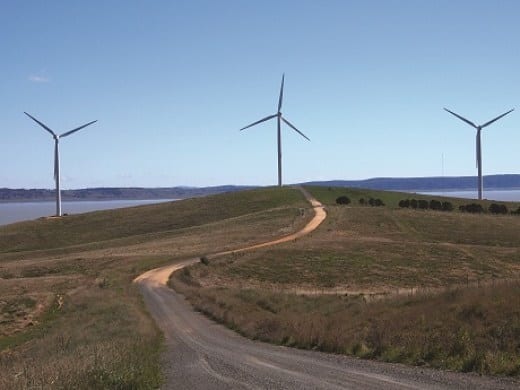
ASX listed renewables outfit Infigen Energy has signalled a shift in focus to the commercial and industrial market, as more Australian businesses seek to take control of their energy costs – and supplies.
Infigen on Monday unveiled a $26.7 million net profit as part of its December half results – marking a 25 per cent lift in half-year profit – and announced plans to refinance its existing debt through a $525 million facility with Goldman Sachs. (And for a fat fee, as David Leitch notes here).
The move to refinance comes as the business continues its efforts to stabilise future revenue by diversifying its customer base, as well as its contracting strategy, and energy mix.
Managing director Ross Rolfe told an analyst briefing on Monday this would mean shifting away from a heavy dependence wind farms, on power purchase agreements and spot market sales, and towards being more of a “gen-tailer to C&I (commercial and industrial).”
The five-year plan is for Infigen to re-balance its current portfolio of wind generation to include one-third contracted under PPAs, one-third to C&I customers and the wholesale market, and the balance sold into the spot market.
“I believe Infigen’s performance in the first half of FY18 (fiscal year 2018) positions the company to capture the opportunities that lie ahead,” Rolfe said in an investor briefing after the results announcement on Monday.
“The C&I market is particularly active as this segment seeks to control its costs,” Rolfe said.
The new strategy would also mean looking beyond wind power to “additional energy supplies,” including new capacity generated by projects developed by Infigen, as well as supplies outsourced from other companies, and even battery storage.
Currently, Infigen has 550MW of its own wind energy generation, with the 113MW Bondangora project in New South Wales set to be commissioned in early 2019. Another three wind projects are in the pipeline.
“We have undertaken a very detailed review of the technologies and contracting options that are available to us, back up through storage, our own generation, contracts with other people,” Rolfe said.
“If someone can offer a PPA price competitive to us building the asset ourselves,” he said, Infigen would look at that option.
It could also mean, he added, “someone acquiring our development assets, and then us being the PPA offtaker.”
On the outlook for the Australian energy market, in particular under the federal government’s proposed but not-yet fully formed National Energy Guarantee, Rolfe said the company was cautiously optimistic.
“Our strategy is compatible with the NEG, but not reliant upon it,” he said.
“The energy market is inherently volatile, but the fundamentals remain strong. We expect LGC prices to remain strong up until 2020,” he said – adding that the company’s revised contracting strategy was, however designed to introduce greater certainty.
“We follow what the market looks like,” Rolfe said. “This year it looks like there are about 8 million LGCs available that don’t need to be surrendered.
“What that tells us, we need to think long and hard about… but we know that oversupply did not depress (LGC) prices in 2017. That’s what we know.”
On the NEG, Rolfe described the policy as “a very useful piece of work in identifying the issues and asking the questions,” but also noted that it also, “of course, contains no answers.”
“A lot remains very opaque,” he said. “The key issue we’ll be watching closely is the extent to which the new system encourages competition.
“We need to ensure there is not a consolidation of position in the hands of the major retailers and that, rather, it promotes increasing levels of competition.
“That’s probably what we’re watching, as well as, of course, details on how it will actually function.”










